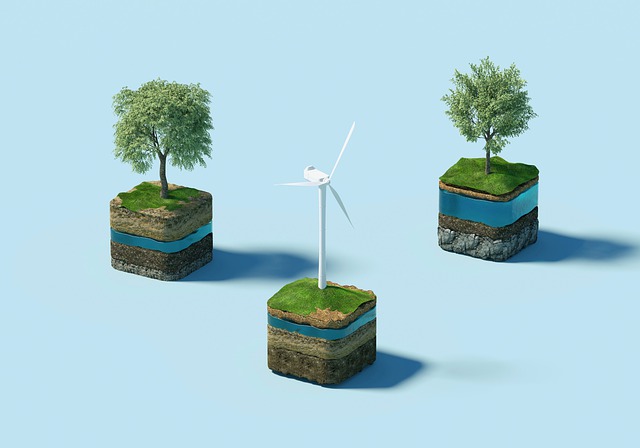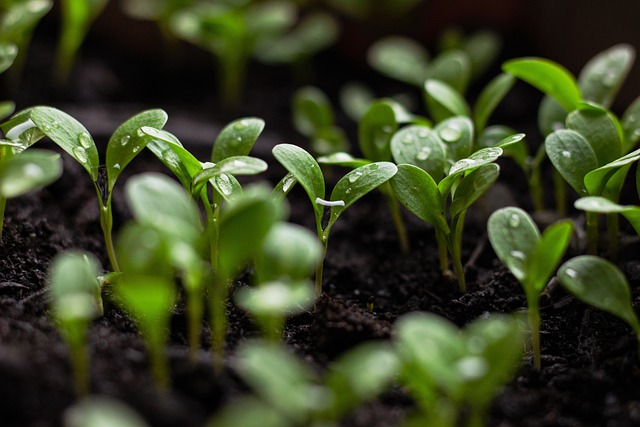As an Amazon Associate I earn from qualifying purchases.
Have you ever thought about living off the grid? Maybe you’ve seen pictures of tiny houses surrounded by nature, or heard about people generating their own electricity and growing their own food. It’s a fascinating idea, right? Well, in this article, we’re going to dive into the world of off-grid living and explore what it truly means to embrace sustainability.
Living off the grid means disconnecting from conventional utility systems such as electricity, water, and sewage. Instead, off-gridders rely on alternative sources of energy like solar panels, wind turbines, and hydro power. They also find creative ways to conserve water and manage waste. It’s about reducing our environmental impact and living a simpler, more self-sufficient lifestyle.
But off-grid living is more than just a sustainable choice, it’s a way to reconnect with nature and live in harmony with the environment. Imagine waking up to the sound of birds chirping, breathing in fresh air, and being surrounded by lush greenery. It’s a stark contrast to the noise and pollution of city life. So, if you’re curious about how to make the switch to off-grid living, keep reading because we’re going to explore the essential steps and considerations that will help you on your journey to sustainability. embracing sustainability: Off-Grid Living
Defining Off-Grid Living
What is Off-Grid Living?
Off-grid living refers to a lifestyle that is not connected to the traditional electrical grid and relies instead on self-sustaining energy sources, such as solar power or wind turbines. It is a way of life that prioritizes independence, self-sufficiency, and a reduced carbon footprint.
Living off-grid means taking control of your own energy production, water management, food production, waste management, and shelter. By disconnecting from centralized systems, individuals and communities can reduce their environmental impact and promote sustainability. It is a conscious choice to live in harmony with nature and to minimize reliance on finite resources.
Benefits of Off-Grid Living
There are numerous benefits to embracing off-grid living. Firstly, it allows for a decreased reliance on fossil fuels and other non-renewable sources of energy. By harnessing renewable energy systems, such as solar panels or wind turbines, off-grid residents can generate their own electricity and reduce their carbon footprint. This leads to not only financial savings but also a reduced impact on the environment.
Another benefit is the freedom and self-sufficiency that comes with off-grid living. You are no longer reliant on external sources for your basic needs, such as food, water, and energy. This independence can provide a sense of security and empowerment, knowing that you have the skills and resources to sustain yourself.
Living off-grid also encourages a simpler lifestyle. By disconnecting from consumerist culture and focusing on sustainable practices, you can reduce waste generation and simplify your consumption habits. This can lead to a more fulfilling and intentional way of life, free from the pressures of constant consumption.
Practical Steps towards Off-Grid Living
Assessing Energy Needs
Before transitioning to off-grid living, it is crucial to assess your energy needs. This involves calculating how much electricity you currently use and determining the energy requirements of your appliances and devices. This assessment will help you determine the size and type of renewable energy system you need to install.
Choosing and Installing Renewable Energy Systems
Once you have assessed your energy needs, you can select the most suitable renewable energy system for your off-grid lifestyle. Solar panels, wind turbines, and hydropower systems are common options. It is important to consider factors such as location, available resources, and budget when choosing a system. Proper installation is essential to maximize energy generation and efficiency.
Maximizing Energy Efficiency
One of the key aspects of off-grid living is maximizing energy efficiency. This involves adopting energy-saving habits and practices, such as using energy-efficient appliances, insulating your home, and utilizing natural lighting and ventilation. By reducing your energy consumption, you can decrease the size of your renewable energy system and conserve resources.

Sustainable Water Management
Capturing and Storing Rainwater
Off-grid living necessitates the exploration of alternative water sources, and rainwater harvesting is a sustainable solution. Installing rainwater collection systems, such as rain barrels or cisterns, allows you to capture and store rainfall for later use. It is important to filter and treat the collected water to ensure its safety for drinking and other purposes.
Implementing Water Conservation Strategies
Conserving water is crucial in off-grid living. Simple measures, such as installing low-flow fixtures, repairing leaks, and practicing mindful water usage, can significantly reduce water consumption. Additionally, reusing graywater, which is water from sinks, showers, and laundry, in your garden or for flushing toilets can further minimize water waste.
Treating and Purifying Water
Ensuring the quality of your water is essential in off-grid living. Implementing water treatment and purification systems, such as filtration and disinfection methods, helps remove contaminants and pathogens from your water supply. These systems can range from basic filters to more advanced technologies, depending on your specific needs and preferences.
Food Production and Sustainable Agriculture
Establishing a Permaculture Garden
Off-grid living provides the opportunity to grow your own food sustainably. Permaculture gardening is a holistic approach to agriculture that mimics natural ecosystems, emphasizing biodiversity, soil health, and water conservation. By designing your garden in harmony with nature, you can create a self-sustaining food production system that requires minimal inputs and generates minimal waste.
Growing and Harvesting Organic Produce
Organic farming practices align perfectly with the principles of off-grid living. By avoiding synthetic pesticides and fertilizers, you can cultivate nutritious and chemical-free produce. Implementing composting, crop rotation, and companion planting techniques can further enhance the health of your soil and increase crop yields.
Raising Livestock in a Sustainable Manner
For those interested in animal products, raising livestock can be part of an off-grid lifestyle. Opting for small-scale and sustainable animal husbandry practices, such as free-range and pasture-based systems, allows for ethical and environmentally friendly meat, dairy, and egg production. It is important to prioritize animal welfare and ensure adequate space, feed, and veterinary care for your animals.

Waste Management and Recycling
Implementing a Composting System
Off-grid living encourages a zero-waste approach, and composting is a valuable tool in minimizing organic waste. By composting food scraps, yard waste, and other organic matter, you can transform them into nutrient-rich soil amendments for your garden. Composting reduces waste sent to landfills and closes the nutrient loop, promoting sustainability.
Reducing Waste Generation
To further minimize waste, it is essential to focus on waste reduction. This can be done by practicing mindful consumption, avoiding single-use products, and opting for reusable alternatives. Repairing and repurposing items instead of discarding them also contributes to waste reduction.
Recycling and Reusing Materials
While reducing waste generation is crucial, there will still be some materials that need to be recycled. Setting up an efficient recycling system ensures that recyclable materials are properly processed and diverted from landfills. Additionally, embracing the concept of upcycling and repurposing materials allows you to give new life to items that would otherwise be discarded.
Creating a Sustainable Shelter
Using Sustainable Building Materials
When designing and constructing an off-grid shelter, it is important to prioritize sustainable building materials. Opting for materials with low embodied energy, such as recycled or reclaimed materials, helps minimize the environmental impact of your home. Additionally, using materials that are renewable, non-toxic, and durable ensures a healthier and more sustainable living environment.
Designing for Energy Efficiency
Energy-efficient design is essential in off-grid living. By considering factors such as orientation, insulation, and passive solar design, you can optimize the thermal performance of your home and reduce the need for artificial heating and cooling. Incorporating energy-efficient appliances and systems further maximizes energy efficiency.
Incorporating Natural Lighting and Ventilation
Taking advantage of natural lighting and ventilation can significantly reduce energy consumption. Designing your home with ample windows, skylights, and ventilation systems allows for sufficient natural light and fresh air, minimizing the need for artificial lighting and mechanical cooling. It also creates a more comfortable and healthier living space.

Living Off-Grid: Challenges and Solutions
Managing Energy and Water Supply
Living off-grid requires careful management of energy and water supplies. Balancing supply and demand, monitoring usage, and implementing conservation practices are essential. This involves being mindful of consumption habits, optimizing energy efficiency, and utilizing water-saving strategies.
Addressing Seasonal Changes and Unpredictable Weather
Off-grid living is influenced by seasonal changes and unpredictable weather patterns. During periods of low energy generation or limited water availability, it is important to have backup systems in place. This can include energy storage solutions, water conservation measures, and alternative heating or cooling methods.
Building a Supportive Off-Grid Community
Living off-grid can be challenging, as it requires a significant shift in lifestyle and mentality. Building a supportive off-grid community can provide invaluable resources, knowledge, and emotional support. By connecting with like-minded individuals, you can share experiences, exchange skills, and collaborate on sustainable initiatives.
Off-Grid Living and Self-Sufficiency
Developing Essential Skills for Self-Sufficiency
Embracing off-grid living often involves acquiring new skills. Learning how to grow food, raise animals, build and maintain renewable energy systems, and perform basic repairs and maintenance are essential for self-sufficiency. Developing these skills enhances your autonomy and resilience.
Growing and Preserving Food for Long-Term Sustainability
Off-grid living encourages food self-sufficiency. By growing your own food and preserving surplus produce, you can reduce reliance on external food sources and ensure a consistent supply. Canning, fermenting, and drying are popular preservation methods that allow you to enjoy homegrown food all year round.
Utilizing Alternative Healthcare and First Aid Practices
In an off-grid lifestyle, access to traditional healthcare services can be limited. Therefore, it is important to explore alternative healthcare practices and first aid methods. Learning basic herbal medicine, natural remedies, and emergency response techniques can empower you to take care of your health and well-being.

Financial Considerations of Off-Grid Living
Calculating Costs and Budgeting for Off-Grid Lifestyle
Transitioning to off-grid living requires careful financial planning. Calculating the costs of renewable energy systems, water management infrastructure, and sustainable building materials is essential. Additionally, factoring in ongoing maintenance and potential unexpected expenses helps create a realistic budget.
Exploring Financial Incentives and Rebates
Governments and organizations often offer financial incentives and rebates to promote renewable energy and sustainable living. Researching and taking advantage of these incentives can significantly offset the initial costs of transitioning to off-grid living. Installing solar panels or wind turbines, for example, may result in tax credits or grants.
Generating Income in Off-Grid Settings
Off-grid living does not necessarily mean complete disconnection from the economy. Many off-grid individuals and communities generate income through sustainable livelihoods, such as organic farming, eco-tourism, or artisan crafts. Exploring income-generating opportunities that align with your off-grid lifestyle can contribute to financial stability.
Conclusion
Embracing sustainability through off-grid living is a transformative and empowering journey. It allows you to take control of your own resources, reduce your environmental impact, and live a simpler and more intentional life. By prioritizing renewable energy, sustainable water management, food production, waste management, shelter design, and self-sufficiency, you can create a more sustainable future for yourself and for generations to come.
Living off-grid requires dedication, adaptability, and a supportive community. It is not without its challenges, but the rewards are immeasurable. By embracing off-grid living, you can transform your life and contribute to the transformation of communities and our planet. Step by step, you can create a more sustainable future and inspire others to join you on this incredible journey.

As an Amazon Associate I earn from qualifying purchases.










